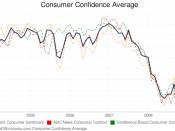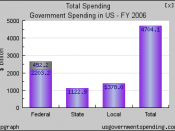Economics is so complex and there are so many different paths the economy can take, that the 5 sector model was devised to simplify the way we can look at it. The model attempts to illustrate how money should theoretically flow in the economy.
The first sector is the household sector. This consists of consumers who earn income in the form of wages, rent, interest and profit from the business or firm sector. In turn, consumers use this income to purchase products and/or services from the business sector.
The business sector includes all private businesses in the economy which produce good and/or services to consumers. Businesses buy productive resources from the household sector. Firms are always attempting to maximise profits by minimising costs.
The financial sector consists of al financial institutions including banks and non-bank financial intermediaries. They borrow money from consumers [through saving (a leakage)] and lend to firms to use for investment (an injection).
Financial institutions attempt to maximise profit by charging more interest on lent money than on borrowed money.
The government sector consists of local, state and federal governments. Governments raise revenue through taxation (a leakage). They use the revenue to provide the public with collective wants such as a police service, fire service, parks, playing ovals... this provides the business sector with revenue because the government employs people from the firm sector to fulfil these collective wants (an injection).
The overseas sector or the international sector consists of exporting and importing goods and services from anywhere but Australia. Imports are a leakage from the economy since the money is being spent outside of Australia. Exports are an injection into the economy because money is being used to buy goods from within Australia.
The economy can contract or expand depending on the extremity of disequilibrium the...


